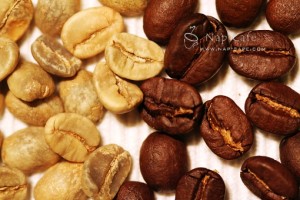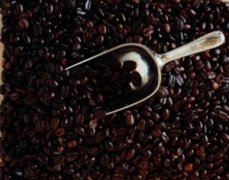Central America Puerto Rico San Pedro Estate Coffee Beans
Puerto Rico

Puerto Rico Puerto Rico San Pedro Manor Coffee beans
Puerto Rico's new farm coffee is a mild, supple and well-balanced island bean with a charming single malt flavor, extremely sweet when sipped in a cup, and medium-roasted creamy and greasy texture that is often suitable for Puerto Rico island beans.
The whole history of coffee in the Caribbean has a lot to do with Spanish reclamation. Coffee was not that important in the 18th century. The main work was to grow sugar-producing crops in fertile valleys. In the early 19th century (1800), the residents of Corsica in the French Mediterranean moved to Puerto Rico because the valleys had been occupied by Spanish immigrants. So they chose to settle in the southwest mountain area of the island, mostly near the city of Yuko. because of their efforts and determination, coffee cultivation brought them a good return. They dominated the coffee industry on the island in the 1860s. At that time, Puerto Rico's coffee bean production ranked sixth in the world, and the coffee trees planted by Corsican immigrants on the highlands were regarded as selected. The origin of Yauco Selecto coffee beans is mainly traced back to this period, but two severe hurricanes hit Puerto Rico in 1898. These two hurricanes destroyed the local coffee industry, and farmers had to wait two years to get the crops back to normal. During this period, the United States was very interested in Puerto Rico's sugar production, and European countries no longer imposed tariffs on Puerto Rico coffee beans as crops produced in their colonies. Dealt a heavy blow to Puerto Rican coffee.
The Caribbean Sea is a warm, romantic and mysterious sea, and a lot of good coffee is also around this ring sea, such as the Blue Mountains of Jamaica, Dominica, Crystal Mountain of Cuba, Yuko of Puerto Rico, and so on. These are the most famous rare and expensive coffee in the world. These island beans make people have a light milky aroma and elegant floral aroma, acidity and meticulous softness. Although it is still difficult to avoid the problem of easy water loss of coffee caused by the muggy climate on the island, the overall texture is the first-grade beans of coffee, and the main reason why Puerto Rican coffee is not easy to buy on the market is that the output is low and most of it is exported to Europe. coupled with the adverse effects of severe weather hurricanes on coffee crops, there will be no coffee to buy that year.
In 1736, coffee trees were introduced from Martinique to Puerto Rico. Most of the early coffee was grown by immigrants from Corsica. By 1896, Puerto Rico was the sixth largest exporter of coffee in the world, with most coffee shipped to France, Italy, Spain and Cuba. Coffee farms flourished in the 19th century, but the rise of sugarcane and drug farming as well as the impact of hurricanes and wars made the coffee industry lag behind and is now recovering.
Today, Puerto Rican gourmet coffee has been exported to the United States, France and Japan. Coffee in this country is generally carefully cultivated with pure flavor, aroma and heavy granules, among which the best is among the world's famous brands. The best coffee is Yallco Selecto, which means "Selecto". Grand Larez and Yaoke coffee (Grand LaresYauco) are produced in the southwest of the island, while Larez coffee is produced in the south-central part of the island.
Yaocote's choice of coffee, which is grown only on three farms in the southwest of the island, is fragrant and has a long aftertaste. This kind of coffee is very expensive and its flavor is comparable to that of any other coffee variety in the world. In the Yauco area, the coffee is owned and operated by local planters. The mountain climate here is mild, the plants have a long mature period (from October to February), and the soil is of high quality clay. Some old varieties of Arabica coffee beans are grown here, although the yield is lower than other varieties, but generally of high quality. People here have been using an ecological and intensive planting method, using only some low-toxic fertilizers and chemicals, and taking mixed crop planting measures to make the soil more fertile. When it comes time to pick coffee beans, people walk back and forth between coffee trees, picking only fully ripe coffee beans, and then wash them in a roller device for 48 hours.
Yaocote chose coffee beans to be preserved in shells before they were shipped, and the skins were not removed until the order was shipped to ensure the best freshness of the coffee. Relevant U.S. government staff, such as FDA and USDA, will also be present when the goods are submitted, and their job is to monitor producers' compliance with federal regulations. There are also some staff from the local evaluation board, who take 1 bag out of every 50 bags as samples and use international gauges to evaluate their quality.
Jaime Fortuno, the president of Escoki's Escogido Yauco agency, pays silent attention to all this work, even the smallest details, every year. Fortuno is an investment banker who graduated from Harvard Business School. He was determined to seize every opportunity to open up a market for top coffee in Puerto Rico. He expects a maximum annual output of 3000 bags of 45kg each, less than 1 per cent of the island's total coffee production.
Yaocote selected is a fascinating coffee, it has a complete flavor, no bitterness, rich nutrition, rich fruit, and is worth tasting. Even Thales in Harrogate, UK, has imported 50 bags of Yaoke specialty coffee.
Puerto Rico and Puerto Rico Yukot select Yauco Selecto is different, Yukot is the manor bean, is Puerto Rico San Pedro, Caracolillo and La Juanita three major estates jointly launched the brand.
Flavor: full granule, complete flavor, rich aroma
Suggested baking method: medium baking
Puerto Rican Coffee-the King's Coffee
Puerto Rico, a small country in South America, is made up of a series of scattered islands, each season like spring, luxuriant flowers and plants, like a chain of beads scattered by God, you can see the brilliance of heaven at the slightest turn. The main island, Puerto Rico, with an area of only 8959 square kilometers, is a small dot on the map, but it is like an enlarged bonsai. The island has many mountains and hills, and the coastal area around the North Mountain is a lowland plain. Although many natural forests have been cut down for arable land, fortunately, the famous cloud cover rainforest in the northeast has been protected into a national park.
The South American amorous feelings carried on the island are so strong that they are hot, direct, heavy and lively. The Atlantic Ocean in the north and the Caribbean Sea in the south bring them abundant rainfall and cool air, which, together with the unique tropical sunshine, spawns batch after batch of dense rainforests and all kinds of animals. Here is the world-famous cloud cover rainforest, people are surrounded by thick water vapor, and the tall trees cover the sky with only a few lines. The leaves of each plant are so green that they seem to be dripping. And the flowers are particularly large compared with those in other places, especially pungent, bright purple, bright red, bright yellow, orange: all dazzling colors, as pure as sunlight and sea water, without a little ash, it is exhilarating to see. Small animals often jump to the treetops in front of their eyes, and the lush trees often block out the birds, so that people can only hear the chirps of far and near. A school of vitality makes people's mood full, even if a person is walking through the forest, there is no room for loneliness and sadness.
On such an island, the best coffee in the world is grown. In particular, Puerto Rico Yaoke special coffee is cultivated by Puerto Rico's well-known estates to cultivate this top coffee with rich coffee planting experience and heritage. It has a special rich flavor, such as cigar tobacco-like incense, wild and unrestrained with sweet taste. It has been loved by European royals and aristocrats for many years, and the royal coffee designated for the Vatican. It is recognized by international coffee appraisers as the third largest coffee in the world.
Important Notice :
前街咖啡 FrontStreet Coffee has moved to new addredd:
FrontStreet Coffee Address: 315,Donghua East Road,GuangZhou
Tel:020 38364473
- Prev

Ecuadorian coffee beans from South American boutique coffee producing area
Coffee origin: the Ecuadorian Arabian Coffee Tree was first introduced to Ecuador (Ecuador) in 1952 and its coffee quality is very good, especially the coffee harvested in early June. Ecuadorian coffee beans can be divided into two varieties: Galapagos and Gigante, both of which have the characteristics of large granules and heavy weight. Ecuadorian coffee can be divided into first class (No.1) and special coffee according to quality.
- Next

The largest producer of boutique coffee, American and Brazilian coffee beans
Brazilian coffee beans generally refer to coffee produced in Brazil. There is a wide variety of Brazilian coffee, the vast majority of which are unwashed and sun-dried, classified according to the name of the state of origin and the port of transport. Brazil has 21 states and 17 states produce coffee, but four of them produce the largest, accounting for 98% of the country's total output. Brazilian coffee has a low sour taste.
Related
- Guji coffee producing area of Guji, Ethiopia: Humbela, Shakiso, Wulaga
- What is the most expensive variety of Qiloso in BOP multi-variety group?
- How to store the coffee beans bought home?
- Why are Yemeni coffee beans so rare now?
- Ethiopian Sidamo all Red Fruit Sun Sun Santa Vini Coffee beans
- SOE is mostly sour? What does it mean? Is it a single bean? what's the difference between it and Italian blending?
- Is Italian coffee beans suitable for making hand-brewed coffee?
- How to choose coffee beans when making cold coffee? What kind of coffee beans are suitable for making cold coffee?
- Just entered the pit to make coffee, what kind of coffee beans should be chosen?
- Can only Japan buy real Blue Mountain Coffee? What are authentic Jamaican Blue Mountain coffee beans?

